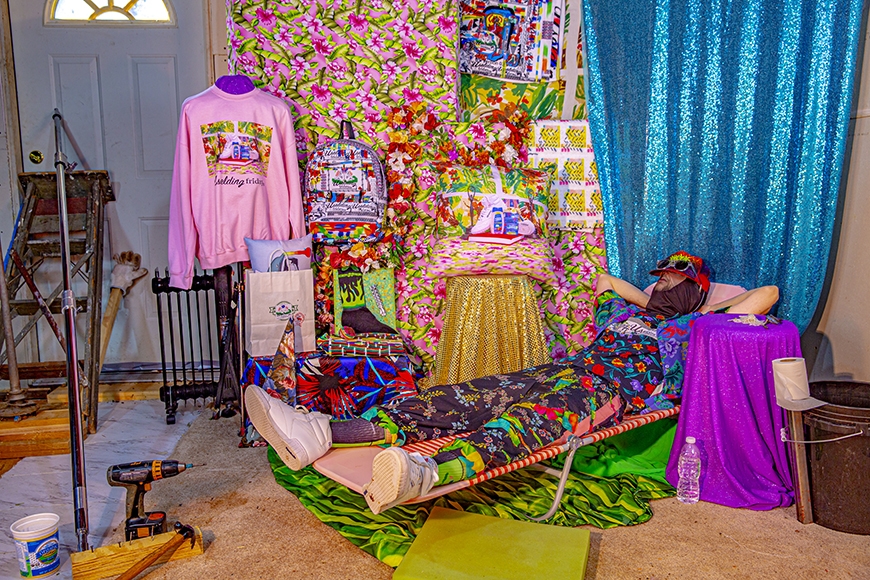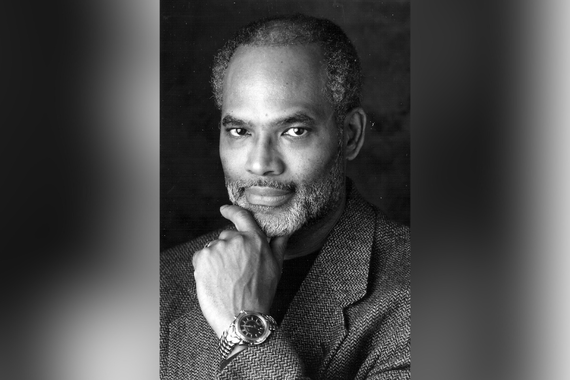An Interview with the Artist Behind “An Interview with Artist Joshua McGarvey”
Interviewer: Thank you for taking some time with us to discuss your work!
Joshua McGarvey: (Dictated Not Read)
Oh, I’m happy for the opportunity to share my experiences with a reputable source like UMN Art News. I receive lots of requests for this type of “conversation,” but learned the hard way that you need to be really careful about who you deal with for this sort of thing in the art world.
Interviewer: Is there a specific situation you would like to share with us?
Joshua: My legal team has advised me to refrain from comment at this time, concerning any disputes in the past or present.
Interviewer: Ok... then I guess we will move on.
Joshua: Apologies.
Interviewer: Anyways, if someone were to write something about Joshua McGarvey and put it on the internet without your permission, how would they introduce your work to people who are new to it?
Joshua: Great, weird question, but I guess that depends on their motivation. Does this hypothetical person like my work? Or do they think I’m pretentious and inaccessible?
Interviewer: For the purpose of our interview I will say this person likes your work and wants to help others like it as well.
Joshua: If we are talking about my recent video, “An Interview with Artist Joshua McGarvey,” then maybe….“Joshua McGarvey uses his art to question the presentation of self. I don’t even know anything about this person, but he wears a mask of his own face and that’s gnarly.” OR “Joshua McGarvey’s current work explores dishonestly communicating honesty.” But here’s an example of something I found online written about me that's better than anything I could make up. “A cabinet of curiosities, a mercurial spirited practice yet prolific and thoughtful.” (laughter).
Interviewer: (laughter) Wow, quite the statement about your work to find on the internet. And speaking of your recent video work, can you tell us how “An Interview with Artist Joshua McGarvey” came about?
Joshua: Right now, my work revolves around a concept I created called “Emotional Anonymity.” Absolute anonymity is nearly impossible for anyone participating in contemporary economic systems. One basic example being if you utilize commercial air travel in the United States, authorities must know your identity. If you want to legally leave the country, it’s the same. So in a society with dwindling privacy, revolving around an economic system that monetizes your data, I have developed a method for emotional refuge in public (and private) spaces. Wearing a mask of your own expressionless face engages with the idea of police state compliance while asserting emotional privacy as a poetic protest.
Using my mask, I have been making videos that utilize the confessional/commentary talking head format from reality television shows. My favorite examples have extravagant sets sometimes full of flowers behind the reality stars as they provide commentary. With these reality TV mechanisms in mind, I began constructing fake bedroom sets to create a sense of intimacy and conduct my own confessionals while wearing my mask. The layering of these elements creates a push-pull between letting the viewer get very emotionally close to me by sharing personal information, while simultaneously pushing the audience away by hiding my actual face and facial expressions. My piece, “An Interview with Artist Joshua McGarvey,” is another experiment with video formats and how the setting and presentation of information helps focus the attention of the audience, but then simultaneously question the format and structure in the process. The “artist profile”, as a media format, is meant to offer insight on the work and personality of an artist while also emphasizing career recognition and legitimizing the creative pursuit(s) of the artist. Take this interview we are conducting. It is meant to highlight the work of me, a previous student, so I feel validated, but then it’s also an advertisement for the art program. So my work twists and abstracts the assumptions we bring to familiar settings, physical and abstract.
Interviewer: Your process sounds elaborate and brings together all kinds of elements from television and film—set building and dressing, costuming, even script writing perhaps. What does a typical work week look like for you? (And have you had to significantly change your routine because of COVID)?
Joshua: I am an early riser. I get up at 5am everyday except Sunday. A routine is important to me and my process, so my typical work week involves early morning reading/studying with my coffee before I head to the studio. In the studio, I try to give everything in it, and myself, space to contemplate the next move. It’s all so abstract that it’s easy to get lost in the absence of structure, so I try to manifest some sort of balance before I really dive into a project. I know that’s even more abstract, but balance is a subjective/personal negotiation. The pandemic has really forced a new calibration of balance because COVID has been a challenge, but this summer, I was able to upgrade to a private studio, which has allowed me to expand my practice. Previously my work space was in an 800 sq ft industrial building that I also managed and sublet to other artists. Above all else, I value the importance of my studio time.
Interviewer: You have exhibited extensively since completing a BFA and MA at Ball State and during and after getting an MFA here at the University of Minnesota in 2015. What strategies could you share with current students for getting their work shown, especially in the early stages of their careers?
Joshua: My advice is to put all your energy into what you care about.
Interviewer: A lot of students (and their families) worry that, if you want to be an artist, that’s great, but you need a back-up plan. Can you demystify how you’ve been able to make a living through making art? What hurdles have you come up against in piecing it all together?
Joshua: I have had several side jobs while also constantly applying to opportunities for funding. It’s another job searching for and finding these opportunities to apply to. Minnesota has many accessible opportunities, which is one reason I decided to come to the Twin Cities in the first place. But over the past few years, I began making clothes for my video performances, which developed into my brand Uselding Fridays—an experimental clothing line that utilizes secondhand clothes and textile remnants for construction. Uselding Fridays is wearable art.
In fact, I am taking over the Waiting Room X Backroom website for a spring collection release launching Friday, April 2, 2021. Also, at the end of September 2021, I am having a fashion show at Franconia Sculpture Park, as part of their 25th anniversary. Starting my own clothing business has given me the ability to continue to pursue arts funding and develop more experimental projects, as well as the opportunity to build a business model that recycles textile waste—a very serious issue associated with the fashion industry.
Interviewer: Speaking of arts funding, congratulations on the 2020 Minnesota State Arts Board Initiative Grant, which funded “An Interview with Artist Joshua McGarvey”! What kind of advice do you have for artists who are starting out and looking for funding?
Joshua: Keep trying. (laughter). That’s honest though. I don’t have any answers or solutions for people. I am just grateful I have received the opportunities I have. I try to be genuine, which I then use my art process to abstract and pick apart what that even means.
See more at: www.joshuamcgarvey.com or on Instagram @joshuadmcgarvey
Looking for opportunities? Try the Mn Artists Opportunities page! They have dozens of calls-for-artists, fellowships, arts jobs, and other funded opportunities.



